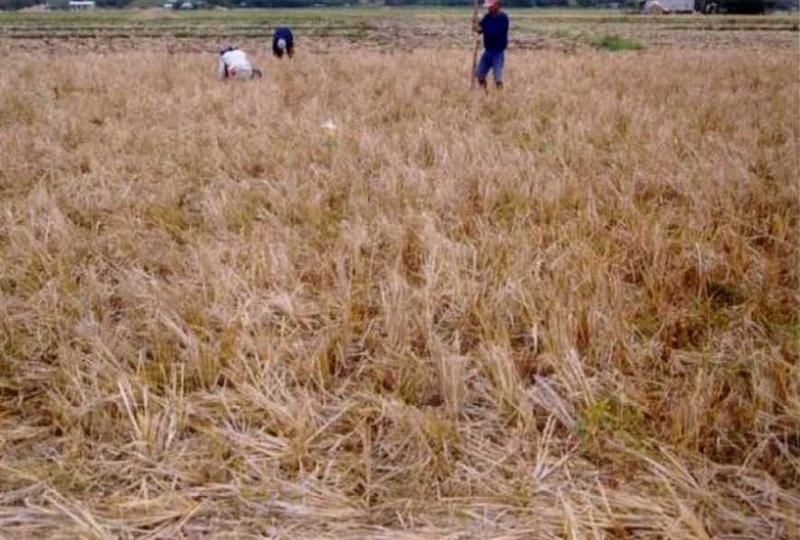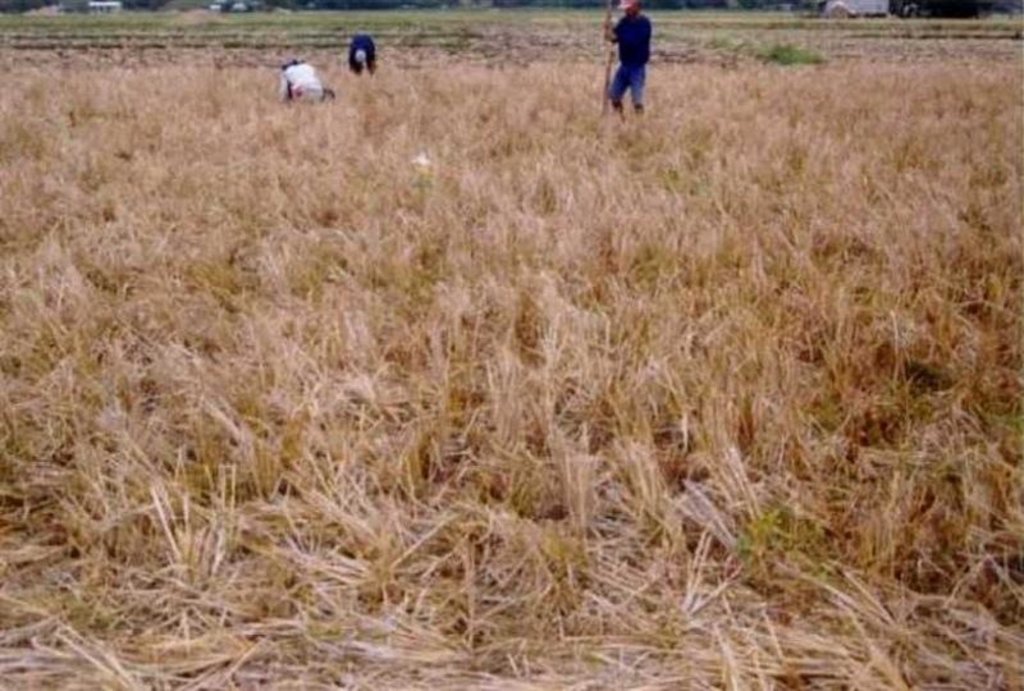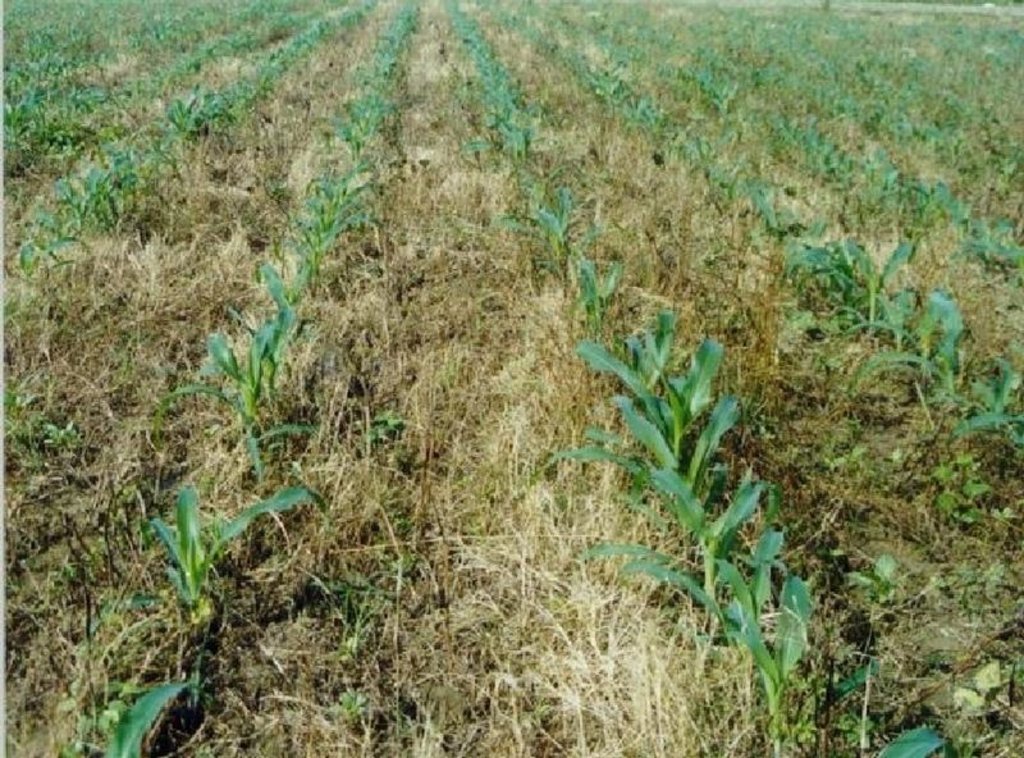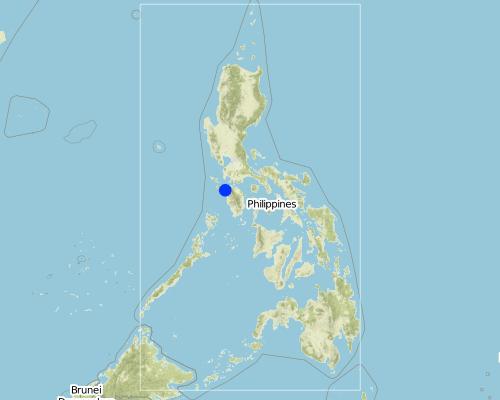Conservation Tillage Practices for Corn Production [الفيليبين]
- تاريخ الإنشاء:
- تحديث:
- جامع المعلومات: Philippine Overview of Conservation Approaches and Technologies
- المحرر: –
- المُراجع: David Streiff
"Tipid Saka"
technologies_1021 - الفيليبين
عرض الأقسام
توسيع الكل طي الكل1. معلومات عامة
1.2 تفاصيل الاتصال بالأشخاص الرئيسيين لمصدر المعلومات والمؤسسات المشاركة في تقييم وتوثيق التقنية
Jasper Manalo
jasper.o.manalo@monsanto.com
Monsanto Philippines
الفيليبين
متخصص في الإدارة المستدامة للأراضي:
Edicer Ocampo Jr
6349 536 4455
edicer@lycos.com
FSSRI, http://www.uplb.edu.ph/research/research-centers
الفيليبين
اسم المؤسسة (المؤسسات) التي سهلت توثيق/تقييم التقنية (إذا كان ذلك على صلة)
Farming Systems and Soil Resources Institute, University of the Philippines Los (Farming Systems and Soil Resources Institute, University of the Philippines Los) - الفيليبيناسم المؤسسة (المؤسسات) التي سهلت توثيق/تقييم التقنية (إذا كان ذلك على صلة)
Monsanto Philippines Inc. - الفيليبين1.3 الشروط المتعلقة باستخدام البيانات الموثقة من خلال WOCAT
متى تم تجميع البيانات (ميدانيا)؟:
04/09/2001
يوافق جامع المعلومات والشخص (لاشخاص) الرئيسي لمصدر المعلومات على الشروط المتعلقة باستخدام البيانات الموثقة من خلال WOCAT:
نعم
2. وصف تقنيةالإدارة المستدامي للأراضي
2.1 وصف مختصر للتقنية
تعريف التقنية:
Conservation Tillage Technology (Zero Tillage) or "Tipid Saka" - A crop production system which focuses on soil conservation and reducing excessive tillage operations, reduces labor and farm inputs while increasing productivity and profitability
2.2 وصف تفصيلي للتقنية
الوصف:
Brief Description about Conservation Tillage Technology
Conservation tillage is the practice of planting seeds through the stubble of last season’s crop, rather than plowing and disking the field. The stubble protects topsoil against loss to wind and rain and reduces chemical run-off to streams. By not plowing, farmers also conserve soil moisture, which can reduce irrigation demands. Farmers can save fuel by reducing the number of farm machinery passes across their fields. In simple terms, Conservation Tillage can be said to lie along a continuum of two other techniques:
Minimum Tillage - mouldboard plowing is replaced by light tillage with tined implements, with or without a low toxicity non-residual herbicide to eliminate both perennial and annual weeds. 30% or more of the soil surface is kept covered by soil residues until final seedbed preparation. Conventional planting equipment can normally be used. Zero Tillage - planting is normally conducted without any preparatory tillage, or seedbed preparation. Normally, this technique requires specialized machinery for planting which can displace residues from the previous crop. A low toxicity non-residual herbicide application is recommended where growing weeds are present. There are numerous potential advantages of conservation tillage:
Farming Benefits
For farmers the primary benefits of CT, achieved with any loss of yields, include:
- More sustainable farming due to dramatic reductions in soil erosion caused by water or wind
- More efficient conservation and utilization of water under dryland conditions
- Improved energy efficiency as a result of reduced fuel requirements associated with fewer field operations
- Greater crop and farm profitability through reduced direct and indirect costs for chemicals, fuel and labor.
Environmental Benefits
At the same time, CT offers a number of significant benefits to the environment, these include:
- Greater biodiversity than with standard cultivation practices where the surface has no crop residues
- Reduces the build-up of soil sediments in reservoirs, drainage, ditches, etc. caused by soil erosion
- Less pollution of drinking water sources caused by run-off of soil, fertilizers and pesticides
- Reduced CO2 emissions due to increased soil organic matter level
Furthermore, crops grown without tillage use water more efficiently, the water-holding capacity of the soil increases, and water losses from runoff and evaporation are reduced. For crops grown without irrigation in drought-prone soils, this more efficient water use can translate into higher yields. In addition, soil organic matter and populations of beneficial insects are maintained, soil and nutrients are less likely to be lost from the field and less time and labor is required to prepare the field for planting. In general, the greatest advantages of reduced tillage are realized on soils prone to erosion and drought. Also achieved are greater water-stability of surface soil aggregates, higher microbial activity and earthworm populations and higher total carbon. Soil loss is less from sprinkler irrigation than in the plow treatment.
2.3 صور التقنية
2.5 البلد/المنطقة/المواقع التي تم تنفيذ التقنية فيها والتي يغطيها هذا التقييم
البلد:
الفيليبين
المنطقة/الولاية/المحافظة:
Laguna
مزيد من التفاصيل حول الموقع:
San Jose, Abra de Ilog, Sta. Cruz, Sablayan
التعليقات:
"Tipid Saka" is being practiced by farmers in the sites of San Jose, Mindoro Occidental since the dry season cropping (1999-2000) with the entry of UPLB Corn project and Monsanto Philippines, Inc.
Map
×2.6 تاريخ التنفيذ
في حالة عدم معرفة السنة بالتحديد، يرجى الإشارة إلى التاريخ التقريبي:
- منذ أقل من 10 سنوات (مؤخرًا)
2.7 إدخال التقنية
حدد كيف تم إدخال التقنية:
- من خلال المشاريع/ التدخلات الخارجية
التعليقات (نوع المشروع، الخ):
Although the technology has long been practiced by farmers particularly in the upland areas, zero tillage practices for corn production after rice was introduced in the SWC sites of Mindoro Occidental by the UPLB Corn project through the "Tipid Saka technology of Mosanto Philippines, Inc.
3. تصنيف تقنية الإدارة المستدامي للأراضي
3.2 نوع (أنواع) استخدام الأراضي الحالية حيث يتم تطبيق التقنية

الأراضي الزراعية
- زراعة سنوية
المحاصيل الرئيسية (المحاصيل النقدية والغذائية):
major cash crop: rice, corn
major food crop: rice, vegetables
other: fruits, tobacco
التعليقات:
Major land use problems (compiler’s opinion): Continuous salinization due to intrusion of salt water and soil fertility decline. Loss of topsoil by water erosion seriously affects soil productivity, degrades water quality and causes costly sedimentation problems.
Major land use problems (land users’ perception): Soil productivity decline; need more inputs to maintain and increase crop yield.
Type of cropping system and major crops comments: Generally, first crop of rice is planted in early part of June nad harvest in mid October. Followed by green corn and/or vegetables in November and harvested in February. Yellow corn is planted in December and harvested in March to April.
3.3 مزيد من المعلومات حول استخدام الأراضي
إمدادات المياه للأرض التي يتم تنفيذ التقنية عليها:
- بعلية
التعليقات:
Also mixed rainfed - irrigated is common but less used than rainfed
عدد مواسم الزراعة في السنة:
- 2
حدد:
Longest growing period in days: 150Longest growing period from month to month: Jun - OctSecond longest growing period in days: 120Second longest growing period from month to month: May - Sep
3.4 مجموعةالإدارة المستدامة للأراضي التي تنتمي إليها هذه التقنية
- الحد الأدنى من اختلال التربة
- إدارة الري (بما في ذلك إمدادات المياه والصرف الصحي)
- cost reduction
3.5 انتشار التقنية
حدد انتشار التقنية:
- منتشرة بالتساوي على مساحة
إذا كانت التقنية منتشرة بالتساوي على منطقة ما، فحدد المنطقة التقريبية المغطاة:
- 1,000-100 كم2
التعليقات:
Total area covered by the SLM Technology is 100 m2.
3.6 التدابير التقنية في مجال إلادارة المستدامة للأراضي
3.7 الأنواع الرئيسية من تدهور الأراضي التي تناولتها التقنية

تآكل التربة بالمياه
- الوزن(Wt): فقدان التربة السطحية/تآكل السطح

التدهور الكيميائي للتربة
- (Cn): تراجع الخصوبة وانخفاض محتوى المادة العضوية (غير ناتج عن الانجراف)

تدهور المياه
- (Ha): التجفيف
التعليقات:
Main type of degradation addressed: Cn: fertility decline and reduced organic matter content
Secondary types of degradation addressed: Wt: loss of topsoil / surface erosion, Ha: aridification
3.8 منع أو حد أو عكس تدهور الأراضي
تحديد هدف التقنية فيما يتعلق بتدهور الأراضي:
- منع تدهور الأراضي
- الحد من تدهور الأراضي
التعليقات:
Main goals: prevention of land degradation
Secondary goals: mitigation / reduction of land degradation
4. المواصفات الفنية، وأنشطة التنفيذ، والمدخلات، والتكاليف
4.2 المواصفات الفنية/شروحات الرسم الفني
Technical knowledge required for field staff / advisors: low
Technical knowledge required for land users: low
Mulching
Material/ species: crop residues, rice stubbles
Remarks: crop residues serve as mulching materials once killed by POWER herbicide
Zero tillage / no-till
Remarks: application of POWER herbicide 7-10 days after irrigation
4.3 معلومات عامة بخصوص حساب المدخلات والتكاليف
حدد كيفية احتساب التكاليف والمدخلات:
- حسب مساحة تنفيذ التقنية
حدد العملة المستخدمة لحساب التكاليف:
- دولار أمريكي
اذكر متوسط تكلفة أجر العمالة المستأجرة في اليوم الواحد:
5.00
4.5 التكاليف والمدخلات اللازمة للتأسيس
| تحديد المدخلات | الوحدة | الكمية | التكاليف لكل وحدة | إجمالي التكاليف لكل مدخل | % من التكاليف التي يتحملها مستخدمو الأراضي | |
|---|---|---|---|---|---|---|
| العمالة | Labour vouluntarily and paid | ha | 1,0 | 147,6 | 147,6 | 100,0 |
| العمالة | post harvest | ha | 1,0 | 200,0 | 200,0 | |
| المواد النباتية | seed | ha | 1,0 | 30,0 | 30,0 | 100,0 |
| الأسمدة والمبيدات الحيوية | fertilizer | ha | 1,0 | 60,0 | 60,0 | 100,0 |
| الأسمدة والمبيدات الحيوية | biocides | ha | 1,0 | 1,6 | 1,6 | 100,0 |
| الأسمدة والمبيدات الحيوية | BIO-N | ha | 1,0 | 2,0 | 2,0 | 100,0 |
| غير ذلك | man person days | ha | 1,0 | 70,0 | 70,0 | 100,0 |
| غير ذلك | marketing: transportation | ha | 1,0 | 20,0 | 20,0 | 100,0 |
| غير ذلك | marketing: packaging | ha | 1,0 | 10,0 | 10,0 | 100,0 |
| إجمالي تكاليف إنشاء التقنية | 541,2 | |||||
التعليقات:
Duration of establishment phase: 0 month(s)
4.6 الصيانة/الأنشطة المتكررة
| النشاط | نوع التدبير | التوقيت/الوتيرة | |
|---|---|---|---|
| 1. | 1st side dressing, Release of trichogramma | زراعية | early vegetative stage / each cropping season |
| 2. | 2nd side dressing, Off-barring and hilling-up | زراعية | vegetative stage / each cropping season |
| 3. | Detasseling | زراعية | late vegetative stage / each cropping season |
| 4. | Spray POWER herbicide, Planting | زراعية | onset of rainy season / each cropping season |
| 5. | Retouch application of POWER herbicide, Replanting | زراعية | onset of rainy season / each cropping season |
4.7 التكاليف والمدخلات اللازمة للصيانة/للأنشطة المتكررة (سنويًا)
التعليقات:
Machinery/ tools: plow, harrow, hand tractor
Per hectare of land
4.8 أهم العوامل المؤثرة على التكاليف
قدم وصفا لأهم العوامل التي تؤثر على التكاليف:
Land cultivation- zero tillage offset the costs incurred during land preparation. Labor costs for hand tractor and carabao-drawn plows are substituted by costs of spraying POWER herbicide which is significantly less expensive
5. البيئة الطبيعية والبشرية
5.1 المناخ
هطول الأمطار السنوي
- < 250 مم
- 251- 500 ملم
- 501 - 750ملم
- 1,000-751 ملم
- 1,500-1,100 ملم
- 2,000-1,500 ملم
- 3,000-2,001 ملم
- 4,000-3,100 ملم
- > 4000 ملم
حدد متوسط هطول الأمطار السنوي (إذا كان معروفًا)، بالملليمتر:
450,00
المنطقة المناخية الزراعية
- رطبة
- شبه رطبة
Thermal climate class: tropics
5.2 طوبوغرافيا
متوسط الانحدارات:
- مسطح (0-2%)
- بسيط (3-5%)
- معتدل (6-10%)
- متدحرج (11-15%)
- تلال (16-30%)
- شديدة الانحدار(31-60%)
- فائقة الانحدار (>60%)
التضاريس:
- هضاب/سهول
- أثلام مرتفعة
- المنحدرات الجبلية
- منحدرات التلال
- منحدرات في السفوح
- قاع الوادي
المنطقة الارتفاعية:
- 100-0 متر فوق سطح البحر
- 500-101 متر فوق سطح البحر
- 1,000-501 متر فوق سطح البحر
- 1,500-1,001 متر فوق سطح البحر
- 2,000-1,501 متر فوق سطح البحر
- 2,500-2,100 متر فوق سطح البحر
- 3,000-2,501 متر فوق سطح البحر
- 4,000-3,001 متر فوق سطح البحر
- > 4000 متر فوق سطح البحر
وضح ما إذا كانت التقنية مطبقة على وجه التحديد في:
- غير ذات صلة
التعليقات والمواصفات الإضافية بشأن التضاريس:
Landfroms: Area has generally flat topography located along wide plains.
Slopes: Small isoloated areas have slope of 0-2%
5.3 التربة
متوسط عمق التربة:
- ضحل جدًا (0-20 سم)
- ضحلة (21-50 سم)
- متوسطة العمق (51-80 سم)
- عميقة (81-120 سم)
- عميقة جدًا (> 120 سم)
قوام التربة (التربة السطحية):
- متوسط ( طميي، سلتي)
المواد العضوية في التربة السطحية:
- متوسطة (1-3%)
إذا كان متاحًا، قم بإرفاق وصف كامل للتربة أو تحديد المعلومات المتوفرة، على سبيل المثال نوع التربة، الرقم الهيدروجيني/ درجة حموضة التربة، قدرة التبادل الكاتيوني، النيتروجين، الملوحة وما إلى ذلك.
Soil texture is medium andtextural analysis of samples show that the soils are silt loam.
Soil feritlity is low and the areas have high potential soil salinity problem.
The soil water storage has a capcity of 53.66% to 77.53% .
5.6 خصائص مستخدمي الأراضي الذين يطبقون التقنية
التوجه السوقي لنظام الإنتاج:
- مختلط (كفاف/ تجاري)
الدخل من خارج المزرعة:
- 10-50% من جميع الإيرادات
المستوى النسبي للثروة:
- ضعيف
- متوسط
مستوى المكننة:
- الجر الحيواني
- ميكانيكية/ مزودة بمحرك
اذكر الخصائص الأخرى ذات الصلة لمستخدمي الأراضي:
Population density: 50-100 persons/km2
Annual population growth: 3% - 4%
and own 15% of the land.
5% of the land users are average wealthy and own 45% of the land.
70% of the land users are poor and own 25% of the land.
25% of the land users are poor and own 15% of the land.
Off-farm income specification: Carpentry, plumbing, business, offer of labor services to neighbors
Market orientation of production system: mixed (subsistence and commercia (Corn)l: Sold to feed millers, surplus is kept for next cropping.
Level of mechanisation: Rich farmers can afford to rent trators but Carabao-drawn plow is still dominant among averaged income farmers.
5.7 متوسط مساحة الأرض المملوكة أو المستأجرة من قبل مستخدمي الأراضي الذين يطبقون التقنية
- < 0.5 هكتارا
- 0.5 - 1 هكتار
- 1 -2 هكتار
- 2 - 5 هكتار
- 5 - 15 هكتار
- 15 - 50 هكتار
- 50 - 100هكتار
- 500-100 هكتار
- 1,000-500 هكتار
- 10,000-1,000 هكتار
- > 10,000 هكتار
هل يعتبر هذا نطاقًا صغيرًا أو متوسطًا أو واسعا (في إشارة إلى السياق المحلي)؟:
- على نطاق صغير
التعليقات:
2-5 ha also common but lowest ranked
5.8 ملكية الأراضي، وحقوق استخدام الأراضي، وحقوق استخدام المياه
ملكية الارض:
- فردية، لا يوجد سند ملكية
حقوق استخدام الأراضي:
- مؤجر
6. الآثار والتصريحات الختامية
6.1 الآثار التي أظهرتها التقنية في الموقع
الآثار الاجتماعية والاقتصادية
الإنتاج
إنتاج المحاصيل
الدخل والتكاليف
دخل المزرعة
عبء العمل
آثار اجتماعية واقتصادية أخرى
input constraints
الآثار الاجتماعية والثقافية
المعرفة بالإدارة المستدامة للأراضي/تدهور الأراضي
التخفيف من حدة الصراع
الآثار الايكولوجية
دورة المياه / الجريان السطحي
تصريف المياه الزائدة
التربة
رطوبة التربة
فقدان التربة
الكمية قبل الإدارة المستدامة للأراضي:
10
الكمية بعد الإدارة المستدامة للأراضي:
2
تراص التربة
الحد من مخاطر المناخ والكوارث
آثار الفيضانات
سرعة الرياح
الآثار الايكولوجية الأخرى
soil fertility
6.4 تحليل التكلفة والعائد
كيف يمكن مقارنة العوائد نسبة لتكاليف الإنشاء (من وجهة نظر مستخدمي الأراضي)؟
عوائد قصيرة الأجل:
إيجابي
عوائد طويلة الأجل:
ايجابي جدا
كيف تتم مقارنة العوائدمع كلفة الصيانة/التكاليف المتكررة (من وجهة نظر مستخدمي الأراضي)؟
عوائد قصيرة الأجل:
ايجابي جدا
عوائد طويلة الأجل:
ايجابي جدا
6.5 اعتماد التقنية
- 50-10%
إذا كان متاحًا، قم بتحديد الكمية (عدد الأسر المعيشية و/أو المساحةالمغطاة):
300 households
من بين جميع الذين تبنوا التقنية، كم عدد الذين فعلوا ذلك بشكل تلقائي، أي دون تلقي أي حوافز مادية/مدفوعات؟:
- 100-90%
التعليقات:
20% of land user families have adopted the Technology without any external material support
300 land user families have adopted the Technology without any external material support
Comments on spontaneous adoption: estimates
There is a strong trend towards spontaneous adoption of the Technology
Comments on adoption trend: Multinational company such as Monsanto Philippines, Inc. Continuously disseminate the technology through promotion of POWER herbicide
6.7 نقاط القوة / المزايا / الفرص التي توفرها التقنية
| نقاط القوة/ المزايا/ الفرص من وجهة نظر مستخدمي الأراضي |
|---|
| Easy to establish and maintain |
| Improved production efficiency |
| نقاط القوة/ المزايا/ الفرص من وجهة نظر جامع المعلومات أو غيره من الاشخاص الرئيسيين لمصدر المعلومات |
|---|
| Easy to establish and maintain |
| Improved production efficiency |
| Increase soil water storage |
6.8 نقاط ضعف / مساوىء / مخاطر التقنية وسبل التغلب عليها
| نقاط الضعف/ المساوىء/ المخاطر من وجهة نظر مستخدم الأراضي | كيف يمكن التغلب عليها؟ |
|---|---|
| Soil compaction and flooding |
| نقاط الضعف/ المساوىء/ المخاطر من وجهة نظر جامع المعلومات أو غيره من الاشخاص الرئيسيين لمصدر المعلومات | كيف يمكن التغلب عليها؟ |
|---|---|
| Soil compaction and flooding |
7. المراجع والروابط
7.2 المراجع للمنشورات المتاحة
العنوان، المؤلف، السنة، النظام القياسي الدولي لترقيم الكتب ISBN:
Labios, R.V. Et al. 200-2002," Conservation Tillage Practices in Corn Production After Rice: A Case in San Jose, Mindoro Occidenta"l. Pamhplet published by UPLB, DA-BAR, and National Corn RDE Network. P33
العنوان، المؤلف، السنة، النظام القياسي الدولي لترقيم الكتب ISBN:
Labios, R.V., Robles, A.Y., Javier, P.A., Garcia, M.U., Gonzales, P.G., Luis, E.M., Labios, J.D., Medina, C.M., Valencia, G.Z., Tamisin, L.L., Ocampo, E.P. Jr., Miciano, D.M. 1999. Annual Report. Enhancing Adaptation and Utilization of Location Sp
العنوان، المؤلف، السنة، النظام القياسي الدولي لترقيم الكتب ISBN:
Manalo, J.O. 2000. Tipid Saka Technology. Monsanto Philippines, Inc. 7th Floor Ayala Life FGU Center, Madrigal Business Park, Alabang, Muntinlupa City.
الروابط والوحدات المواضيعية
توسيع الكل طي الكلالروابط
لا يوجد روابط
الوحدات المواضيعية
لا يوجد وحدات مواضيعية





